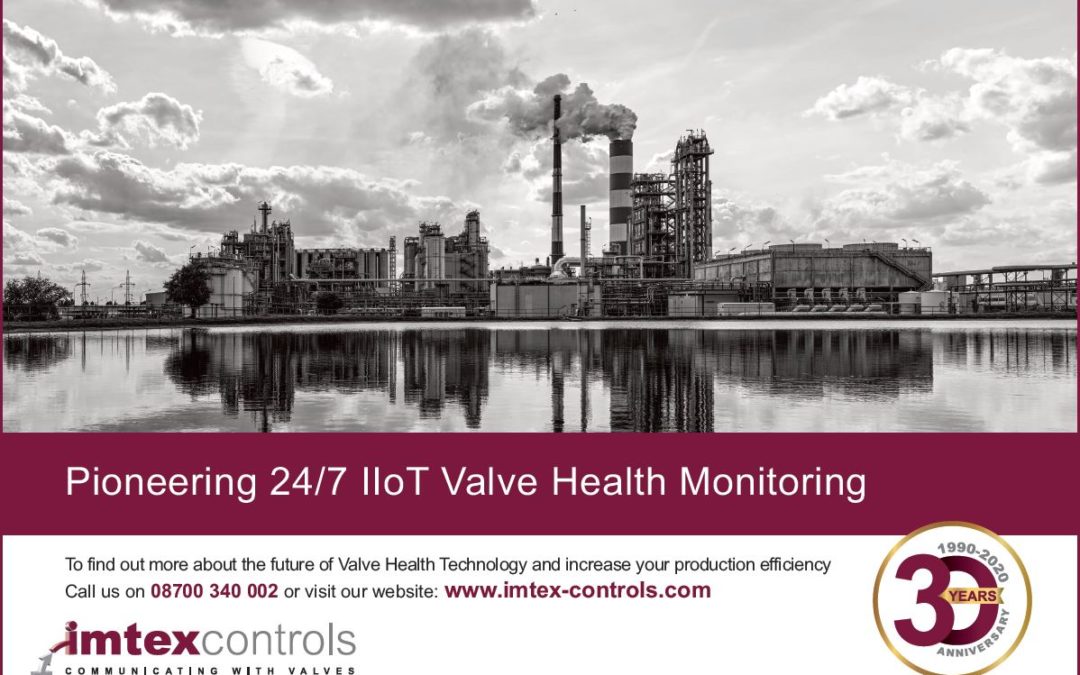As Industry begins to explore the potential benefits of embracing plant level digitisation, the opportunity to significantly increase efficiency through effective condition monitoring of equipment is clear. With the 1000s of valves typically used on any plant being one of the primary causes for unscheduled production downtime, huge potential savings can be realised through effective monitoring of their performance.
Most plants already have one form of valve condition monitoring device installed, namely the smart valve positioner on control valves. However, few utilise or even realise the diagnostic capabilities of these instruments, and, even where plants have tried to use positioners for condition monitoring, operational and knowledge limitations has only afforded minimal benefits. Where automation and instrumentation requirements are relatively low, as is the case with on/off valves that do not require the control functionality of a valve positioner, it can be difficult to justify the time and money involved with installing a smart positioner to provide condition monitoring information. In addition, fitting a smart positioner to an automated on/off valve introduces additional operational issues such as compromised stroking times and increased potential failure modes.
A number of companies have tried to develop bespoke systems for on/off valve applications but they can present the end user with other operational, financial and/or functional implementation issues. They are generally more costly than traditional feedback systems, can require installation of new wiring and hardware and can have software integration issues. Operationally, They will typically require site personnel to ‘harvest’ data and trained personnel to perform data review. These tasks will often be overlooked or performed un-systematically, resulting in the potential benefits of the system used to not be fully realised.
Imagine instead a cost effective system that enables ‘real time’ reports identifying which valves need attention, to be delivered directly to your inbox or smartphone.
Condition Monitoring Solution for Automated On/Off Valves – A Wish list
When asked what a condition monitoring solution for an automated on/off valve should look like, most plant operators have common desires. These are:
The system should be simple to install – This should apply to both new installations and, importantly for retrofit applications as there are vast swathes of valves already installed that would benefit from condition monitoring
The system should have no impact on Plant Control – Any condition monitoring system should not have the potential to compromise safe plant control or operation, preferably working in parallel with DCS/PCS operations
The system should not require additional wiring – For retrofit applications, any equipment installed for condition monitoring should not require additional wiring to enable it to operate. Installing new wiring infrastructure is very complicated and expensive and would make the case for fitting a system difficult to justify
The system should not require additional software within the Process Control Environment – Similar to wiring, introducing additional software into the process control environment can be difficult. Not only can software integration be challenging and expensive, but there is also the potential for security issues to arise which could have disastrous effects
The system should be fully automated – Plant operations teams are busy people, and tasking them with additional work, such as collecting data from valves, is not desirable. As such, any condition monitoring system should be capable of harvesting data automatically and sending it for analysis without the requirement for plant personnel to be involved
The system should be an extremely cost effective solution – In an ever more competitive economic environment, pressures on capital budgets are high. Therefore, any condition monitoring solution must be able to demonstrate a clear financial case. This means keeping the additional pressure on capital project budgets to the absolute minimum whilst providing the operational cost benefits that condition monitoring offers.
Introducing a REAL IIoT Valve Diagnostic Monitoring Solution
Imtex Controls, a valve automation and communication company based in the UK, has recently introduced a valve condition monitoring solution targeted at the on/off valve market that addresses the implementation and operational demands that end users have. The technology, called Valvescan Diagnostic and Monitoring System (VDMS), has been designed to provide clear condition data for automated on/off valves without tasking the plant level operations team with any additional work plan requirements or creating any potential to compromise plant safety.
The two core elements of VDMS are:
Valvescan Field Mounted Device (VFMD) – Mounted on the automated valve in the same way as a traditional limit switchbox, the field mounted device gathers data from every valve operation and transmits this data via a cellular network to the cloud. The VFMD is purely a datalogger – it does not have control capability – and is powered using existing wiring infrastructure to the valve. The datalogging and transmittal within the VFMD is done in parallel with the Plant Control System so that plant operations run exactly as they did previously
ValveHealth Diagnostic Application – ValveHealth is a cloud based application that receives data from the VFMD via the cellular network and analyses it automatically. The results off this analysis can be made available to authorised users in a web portal or shared with a wider plant condition monitoring platform as desired. Alerts can also be configured and pushed out to the people that need to know, whether that be key plant personnel or contracted valve service providers
VDMS can be deployed in both green field and brown field applications with minimal additional infrastructure requirements. By comparing current performance signatures with historic ‘as new’ data, the system provides an assessment of the current health of the automated valve assembly with the goal of predicting a ‘time to failure’ value for the valve. Maintenance and pro-active interventions can then be scheduled in advance of any issues.
Find out more at www.imtex-controls.com or call us on: 08700 340 002


Recent Comments